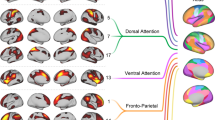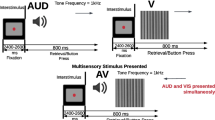Abstract
Adolescence is a period of substantial experience-dependent brain development. A major goal of the Adolescent Brain Cognitive Development (ABCD) study is to understand how brain development is associated with various environmental factors such as socioeconomic characteristics. While ABCD study offers a large sample size, it still requires a sensitive method to detect subtle associations when studying typically developing children. Therefore, we propose a novel transform, i.e. covariance-based multi-scale transform (COVLET), which derives a multi-scale representation from a structured data (i.e., P features from N samples) that increases performance of downstream analyses. The theory driving our work stems from wavelet transform in signal processing and orthonormality of the principal components of a covariance matrix. Given the microstructural properties of brain regions from children enrolled in the ABCD study, we demonstrate a multi-variate statistical group analysis on family income using the multi-scale feature derived from brain structure and validate improvement in the statistical outcomes. Furthermore, our multi-scale descriptor reliably identifies specific regions of the brain that are susceptible to socioeconomic disparity.
Access this chapter
Tax calculation will be finalised at checkout
Purchases are for personal use only
Similar content being viewed by others
References
Blakemore, S.J.: Imaging brain development: the adolescent brain. Neuroimage 61(2), 397–406 (2012)
Bullmore, E., Fadili, J., Breakspear, M., Salvador, R., Suckling, J., Brammer, M.: Wavelets and statistical analysis of functional magnetic resonance images of the human brain. Stat. Methods Med. Res. 12(5), 375–399 (2003)
Cai, Z., et al.: A unified multi-scale deep convolutional neural network for fast object detection. In: Leibe, B., Matas, J., Sebe, N., Welling, M. (eds.) ECCV 2016. LNCS, vol. 9908, pp. 354–370. Springer, Cham (2016). https://doi.org/10.1007/978-3-319-46493-0_22
Coifman, R.R., Maggioni, M.: Diffusion wavelets. Appl. Comp. Harmonic Anal. 21(1), 53–94 (2006)
DeRosse, P., Ikuta, T., Karlsgodt, K.H., et al.: History of childhood maltreatment is associated with reduced fractional anisotropy of the accumbofrontal ‘reward’ tract in healthy adults. Brain Imaging Behav. 14, 1–9 (2020)
Destrieux, C., et al.: Automatic parcellation of human cortical gyri and sulci using standard anatomical nomenclature. Neuroimage 53(1), 1–15 (2010)
Farah, M.J.: The neuroscience of socioeconomic status: correlates, causes, and consequences. Neuron 96(1), 56–71 (2017)
Fuhrmann, D., Knoll, L.J., Blakemore, S.J.: Adolescence as a sensitive period of brain development. Trends Cogn. Sci. 19(10), 558–566 (2015)
Fuster, J.M.: Frontal lobe and cognitive development. J. Neurocytol. 31(3–5), 373–385 (2002)
Gianaros, P.J., Marsland, A.L., Sheu, L.K., Erickson, K.I., Verstynen, T.D.: Inflammatory pathways link socioeconomic inequalities to white matter architecture. Cereb. Cortex 23(9), 2058–2071 (2013)
Hammond, D.K., Vandergheynst, P., Gribonval, R.: Wavelets on graphs via spectral graph theory. Appl. Comp. Harmonic Anal. 30(2), 129–150 (2011)
Hammond, D.K., Vandergheynst, P., Gribonval, R.: The Spectral graph wavelet transform: fundamental theory and fast computation. In: Stanković, L., Sejdić, E. (eds.) Vertex-Frequency Analysis of Graph Signals. SCT, pp. 141–175. Springer, Cham (2019). https://doi.org/10.1007/978-3-030-03574-7_3
Jednoróg, K., et al.: The influence of socioeconomic status on children’s brain structure. PloS One 7(8), e42486 (2012)
Jernigan, T.L., Brown, T.T., Hagler Jr., D.J., et al.: The pediatric imaging, neurocognition, and genetics (ping) data repository. Neuroimage 124, 1149–1154 (2016)
Kim, W.H., et al.: Wavelet based multi-scale shape features on arbitrary surfaces for cortical thickness discrimination. In: NeurIPS, pp. 1241–1249 (2012)
Kim, W.H., Kim, H.J., Adluru, N., Singh, V.: Latent variable graphical model selection using harmonic analysis: applications to the human connectome project (HCP). In: CVPR, pp. 2443–2451 (2016)
Kim, W.H., et al.: Multi-resolutional shape features via non-euclidean wavelets: applications to statistical analysis of cortical thickness. NeuroImage 93, 107–123 (2014)
Lai, W.S., Huang, J.B., Ahuja, N., Yang, M.H.: Deep laplacian pyramid networks for fast and accurate super-resolution. In: CVPR, pp. 624–632 (2017)
Lebel, C., Deoni, S.: The development of brain white matter microstructure. Neuroimage 182, 207–218 (2018)
Lebel, C., et al.: Microstructural maturation of the human brain from childhood to adulthood. Neuroimage 40(3), 1044–1055 (2008)
Lee, A.: Us poverty thresholds and poverty guidelines: What’s the difference. Population Reference Bureau (2019) (2018)
Lowe, D.G.: Object recognition from local scale-invariant features. In: ICCV, vol. 2, pp. 1150–1157. IEEE (1999)
Mallat, S.G.: A theory for multiresolution signal decomposition: the wavelet representation. TPAMI 11(7), 674–693 (1989)
Mani, I., Zhang, I.: k-NN approach to unbalanced data distributions: a case study involving information extraction. In: Proceedings of Workshop on Learning from Imbalanced Datasets, vol. 126 (2003)
Marshall, A.T., et al.: Association of lead-exposure risk and family income with childhood brain outcomes. Nat. Med. 26(1), 91–97 (2020)
Noble, K.G., et al.: Family income, parental education and brain structure in children and adolescents. Nat. Neurosci. 18(5), 773 (2015)
Sowell, E.R., Delis, D., Stiles, J., Jernigan, T.L.: Improved memory functioning and frontal lobe maturation between childhood and adolescence: a structural mri study. J. Int. Neuropsychol. Soc. 7(3), 312–322 (2001)
Volkow, N.D., et al.: The conception of the abcd study: from substance use to a broad nih collaboration. Dev. Cogn. Neurosci. 32, 4–7 (2018)
Zou, H., Hastie, T.: Regularization and variable selection via the elastic net. J. Roy. Stat. Soc. 67(2), 301–320 (2005)
Acknowledgement
This research was supported by GAANN Doctoral Fellowships in Computer Science and Engineering at UTA sponsored by the U.S. Department of Education, NIH R01 AG059312 and IITP-2020-2015-0-00742. Numerous funding agencies have continued to support the ABCD study. A full list is provided at https://abcdstudy.org. We also would like to thank Dr. Rui Meng for insightful discussions and comments that greatly improved the manuscript.
Author information
Authors and Affiliations
Corresponding author
Editor information
Editors and Affiliations
1 Electronic supplementary material
Below is the link to the electronic supplementary material.
Rights and permissions
Copyright information
© 2020 Springer Nature Switzerland AG
About this paper
Cite this paper
Yang, F., Isaiah, A., Kim, W.H. (2020). COVLET: Covariance-Based Wavelet-Like Transform for Statistical Analysis of Brain Characteristics in Children. In: Martel, A.L., et al. Medical Image Computing and Computer Assisted Intervention – MICCAI 2020. MICCAI 2020. Lecture Notes in Computer Science(), vol 12267. Springer, Cham. https://doi.org/10.1007/978-3-030-59728-3_9
Download citation
DOI: https://doi.org/10.1007/978-3-030-59728-3_9
Published:
Publisher Name: Springer, Cham
Print ISBN: 978-3-030-59727-6
Online ISBN: 978-3-030-59728-3
eBook Packages: Computer ScienceComputer Science (R0)





